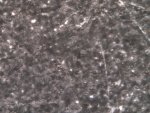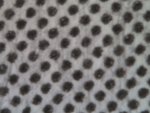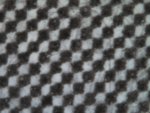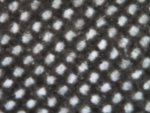BeauchampT
Well-known member
 Want to get feedback on the appearance of these solid laydowns. The pictures are taken at 50X magnfication of ink printed on MFC quailty paper. This is consitent on different presses, at different speeds. Sheetfed and web (more pronounced the higher speed you go). Different inks, different fount solutions, even checked on a coated paper, yet, all get the same pattern.
Want to get feedback on the appearance of these solid laydowns. The pictures are taken at 50X magnfication of ink printed on MFC quailty paper. This is consitent on different presses, at different speeds. Sheetfed and web (more pronounced the higher speed you go). Different inks, different fount solutions, even checked on a coated paper, yet, all get the same pattern.There are two distinct problems 1) 'voids' (actual white spaces in the print) (I know what this is from and am pursuing a solution), 2) if you look it seems like the ink lays down in a mottled pattern.
Is this just a natural limit of lithography, is it possibly from a raw supply, or am I just overthinking it....?
Thanks for your help.
Last edited:
















